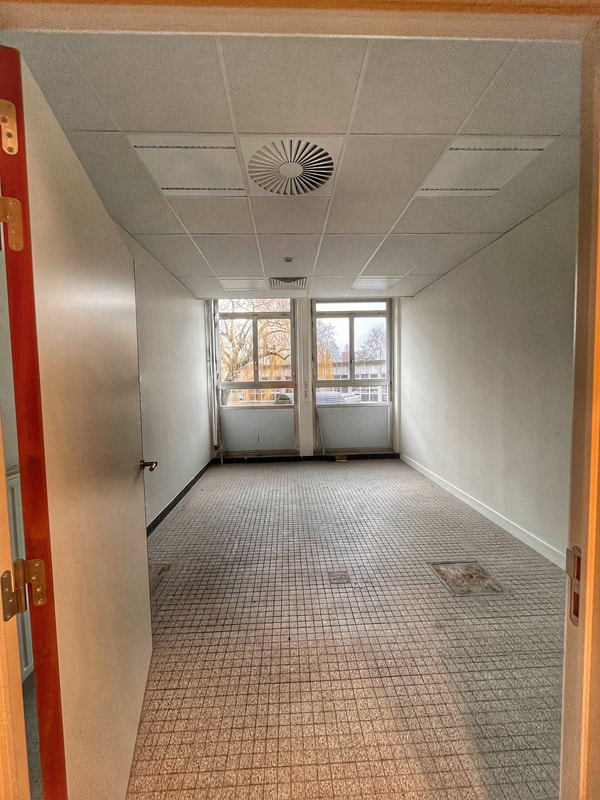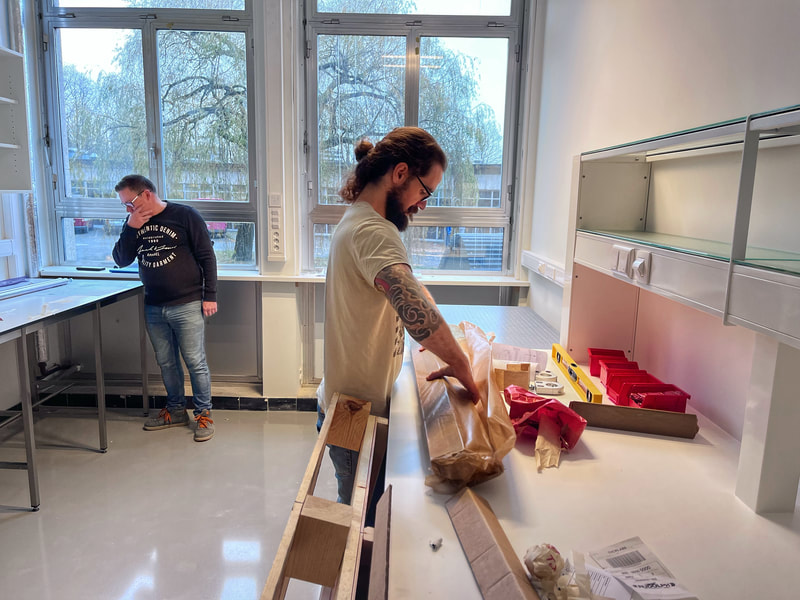After a series of quality tests, laboratory calibration and validation conducted by PhD student Qiming Sun and postdoctoral fellow Jordan Toullec, the PIC sensor prototype is ready to roll. The box with the LISST-Tau and LISST-PIC prototype was installed on the RRS Discovery in Southampton by Griet to embark on a voyage to the Icelandic Basin tomorrow!
This large, one-month long oceanographic campaign is led by Prof. Stephanie Henson (NOC) as part of the UK NERC-funded Bio-Carbon program aimed at better understanding and predicting biologically mediated ocean carbon storage. Specifically, we contribute to the coccolithophore component of the program referred to as the CHALKY project led by Prof. Alex Poulton (Heriot-Watt University). Excited to see our babies go on their first field trip! Today is a BIG day; after three years of sensor development work, the first prototype of the autonomous PIC sensor arrived in the Marine Optics and Remote Sensing (MarSens) lab!
In the coming days our new baby will undergo quality checks, lab calibration and validation so that it can go on its first ship voyage to the Icelandic basin at the end of May! The CarbOcean Team would like to thank their partner Sequoia Scientific (USA) for the pleasant and fruitful collaboration and for their exceptional expertise, professionalism and punctuality in the production of the prototype and all intermediate milestones. Thumbs up!!!! The CarbOcean team attended the VLIZ Marine Science Day 2024 (VMSD 2024) on March 6th at De Grote Post in Ostend. Aligned with the Belgian EU Presidency, the event spotlighted the EU Mission Ocean & Waters, addressing its core topics: ocean pollution, climate/carbon, and biodiversity. The CarbOcean team showcased during the conference's interactive session various organisms contributing to the biological carbon pump in the ocean, as well as cultured coccolithophores and diatoms in the laboratory. The team aslo showcased multiple optical measurement techniques for marine particle research, featuring the trusty turbidimeter, the LISST-Tau high-precision transmissometer, and those super cool satellite images offering visuals of particles in the ocean with a much broader view. These tools are like oceanic detectives, uncovering the secrets of suspended particles and giving us a glimpse into the hidden world beneath the waves! Photo credit: Els Verhaeghe, VLIZ PhD student Qiming Sun was honored with the Brilliant Marine Research Idea 2024 award for his idea 'Proof-of-concept for a submersible autonomous turbulence sensor', supported by VLIZ philanthropic initiative The Sea as a Good Cause. He is set to present his work at VMSD 2025. This BMRI grant aims to explore the possibility of measuring microscale turbulence, which is crucial in various physical processes like air-sea gas and heat exchange, and biological processes such as planktonic nutrient uptake, grazing, and mating, using optical methods.
The VMSD event was a hit once more, with a diverse range of topics and engaging talks and posters that left us feeling inspired! We can't wait for the next event and are gearing up to share more of what the CarbOcean team has accomplished! An unused room was identified in January 2023 and assigned to the Marine Optics and Remote Sensing Team (MarSens) of UGent in March 2023. Since summer 2023 the room underwent beautiful transformations and is now finally ready as the "MarSens laboratory room"! Qiming and Jordan are setting it up for the next series of CarbOcean experiments!
|
AuthorGriet Neukermans, PI Archives
December 2023
Categories |



















 RSS Feed
RSS Feed
